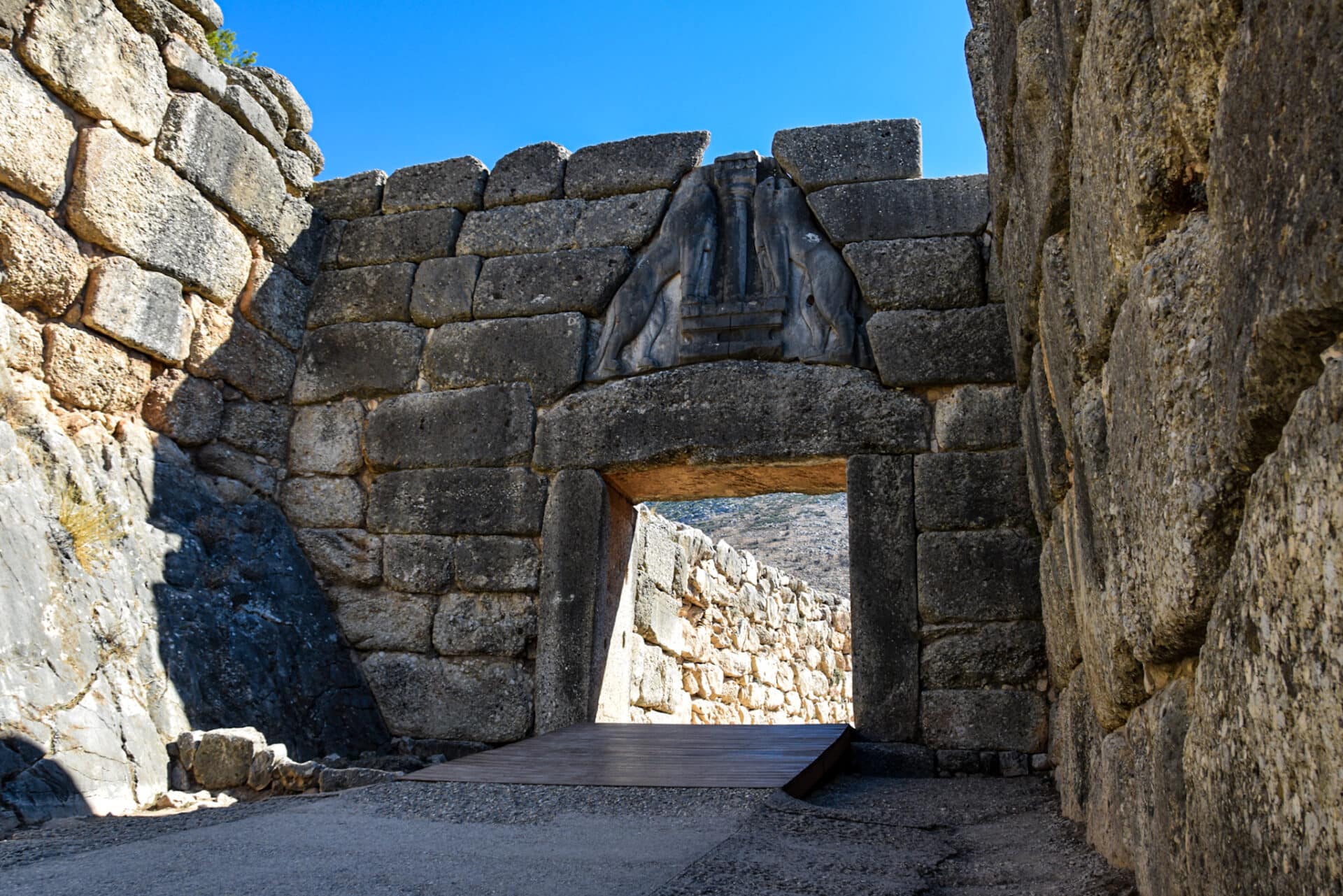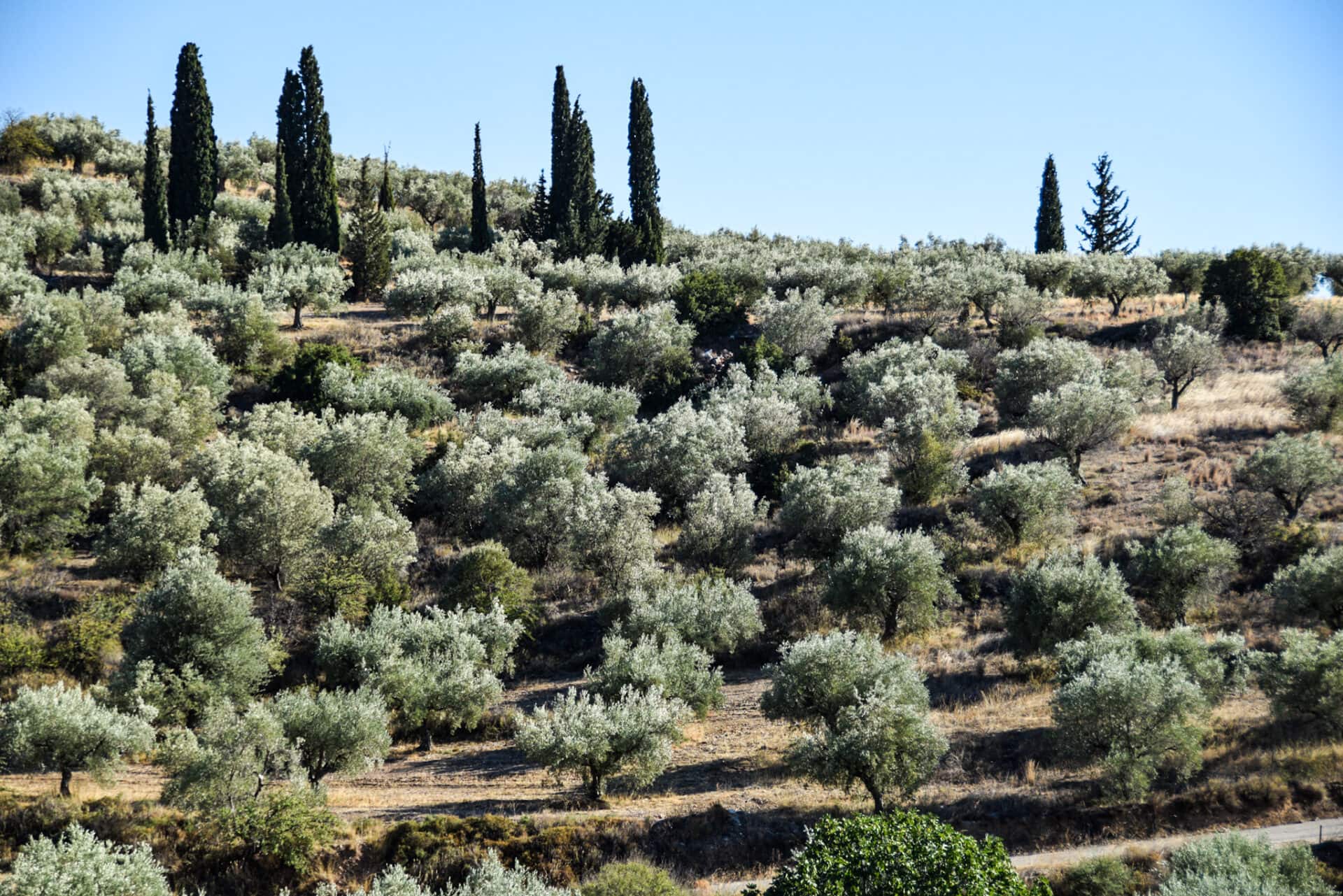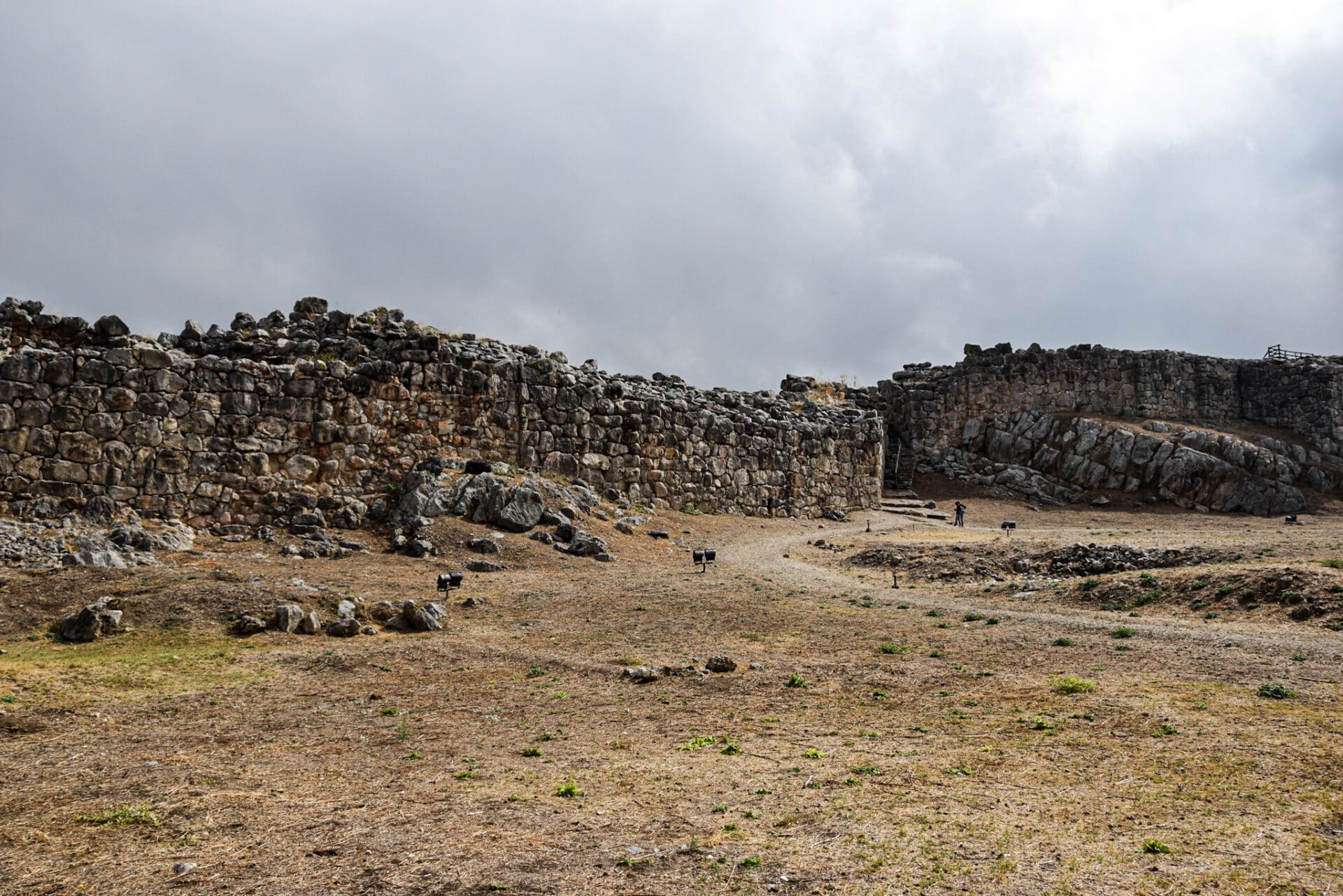Superseding the Minoans in the later stages of the Bronze Age (1750-1050 BCE), the Mycenaeans became the dominant Greek culture, as well as the first advanced civilization on the mainland before completely vanishing from the world stage at the turn of the millennium. Today, the monolithic marvels of Mycenae and Tiryns tell the staggering tale of their former height.
At a time when most of Europe still dwelled in darkness, the light shone bright in Hellas. First held by the Minoans, the torch of civilization was subsequently passed on to the Mycenaeans who established one of the most sophisticated societies of their time. Trade flourished and kings and queens resided in luxurious palaces, lavishly ornamented with colourful murals and mosaics, their settlements shielded by colossal walls so monumental the Greeks later believed them to be erected by Cyclopes. Their mortal remains were laid out in enormous underground tombs filled with the finest art and most intricate metalwork for the afterlife.
However, when the Mycenaeans perished in the cataclysmic events of the Bronze Age collapse, their legacy drifted into the realm of legends. For the people who ultimately emerged from the obscurity of the region’s Dark Age, the Mycenaeans were larger than life and the period of their reign became known as the “Age of Heroes”, not only setting the stage for Homer’s great epics Iliad and Odyssey but Greek mythology as a whole.
Whether these fanciful accounts are credible, remains questionable at best. The tangible existence of Mycenaean monumental structures is a fact. Now protected by UNESCO, these imposing remnants allow a fascinating glimpse into this mythical period of human history.

MYCENAE
Uniformly regarded as the most powerful and splendid of the Mycenaean cities, Mycenae was, according to legend, founded by none other than Perseus, son of the Greek Allfather Zeus and the beautiful Danaë. Although the true origin of the name has been lost, the Greek traveller Pausanias, who visited the site in the 2nd century BCE, gives the following explanation:
- Perseus chose the name after the pommel (mykes) of his sword fell to the ground
- Perseus discovered a spring underneath a giant mushroom (also mykes)
Whichever holds true, Mycenae’s secure and advantageous position along local trade routes paved her way of becoming the dominant Mycenaean settlement by the 14th century BCE.
Unfortunately, besides the indomitable Cyclopean walls and the reconstructed Lion Gate, little remains of the former citadel. However, during Mycenae’s heyday the palace featured the beautifully decorated megaron (the political, administrative, military, and economical centre of Mycenaean poleis), various shrines and temples (a rarity for Mycenaean sites), separate quarters for the different artisans and craftsmen, an underground cistern, and several administrative and commercial buildings.


Today, many of the structural highlights lie beneath the surface.
The massive tholos tombs, characterized by their imposing, elongated portals and lofty beehive vaults, impress as much with their grandeur as with their architectural finesse. Designed as the final resting places for Mycenae’s royal families, the chambers are acoustic masterpieces echoing the softest word and gentlest footstep (even with the dome collapsed!).
A masterful feat of engineering.
Three of these ingenious burial sites can be found within the archaeological park, while several smaller tombs rest undisturbed in the shade of the surrounding olive groves (for those eager to go on a little Tomb Raider mission). Most stand ruinous, however, one is in perfect condition (pinned on Google Maps as Demon’s Grave). The grandest of the tombs, the illustrious sounding “Treasury of Atreus”, lies south of the site down the main road and can be visited as part of the archaeological park.
Also, don’t forget to stop by the museum showcasing hundreds of wonderful artifacts, including intriguing cult objects, different style weapons, beautiful pottery, and the golden Mask of Agamemnon (indeed, the same Agamemnon who led half of Greece into a decade long conflict of honour, because some goddesses deemed it wise to let a mortal be the judge in their beauty pageant), painting a vivid picture of one of the Ancient World’s most prolific civilizations.
Entrance fee | General admission: 6€*/12€ | EU citizens 25 and under/non EU children 5 and under: free | Seniors/non EU citizens 6-25: 6€
Free admission days | 6 March | 18 April | 18 May | 28 October | last weekend of September | first Sunday of every month from 1 November till 31 March
Opening hours | Nov-Mar 8:30-15:30 | Apr 8:00-19:00 | May-Aug 8:00-20:00 | 1.9-15.9 8:00-19:30 | 16.9-30.9 8:00-19:00 | 1.10-15.10 8:00-18:30 | 16.10-31.10 8:00-18:00
Closed | 1 January | 25 March | Orthodox Easter Sunday | 1 May | 25/26 December
*reduced price Nov-Mar
For latest prices and opening hours check out the website of the Argolis region.
HOW TO GET THERE
During high season, buses go directly from Argos to the archaeological park, however, in off season you will get off in Fichti roughly four kilometres (45min) west of Mycenae.
If you don’t fancy walking the remainder of the way, you could arrange private transport or try to hitchhike. Most people driving towards the village of Mykines will head for the ruins so chances are high that someone will pick you up.

TIRYNS
Only twenty kilometres to the south, lie the ruins of a second incredible urban centre of the Mycenaean civilization. Although inferior to Mycenea in both prestige and prevalence, visually Tiryns is as impressive. Nowadays reduced to her magnificent outer walls, one can only imagine the city at the peak of her power, when 10.000 people dwelled in the presence of her impenetrable defences, creating one of the most important Bronze Age settlements in Europe.
Similar to her northern sister, Tiryns is deeply rooted in Greek legend. Perseus himself is said to have ruled these fertile lands along the Argolic Gulf before moving northward and founding Mycenae. Hercules too came to Tiryns on his search for atonment after slaughtering his own wife and children in a frency, leading him to accomplish twelve ardeous quests (Twelve Labours of Hercules). And even Bellerophon and his winged horse Pegasus made rest by her Cyclopean walls on their way to vanquish the vile Chimaera of Caria.
Conveniently located just off the road between Argos and Náfplio, Tiryns is definitely worth checking out.
Entrance fee | General admission/Seniors/non EU citizens 6-25: 2€*/4€ | EU citizens 25 and under/non EU children 5 and under: free
Free admission days | 6 March | 18 April | 18 May | 28 October | last weekend of September | first Sunday of every month from 1 November till 31 March
Opening hours | 8:30-15:30
Closed | 1 January | 25 March | Orthodox Easter Sunday | 1 May | 25/26 December
*reduced price Nov-Mar
For latest prices and opening hours check out the website of the argolis region.
HOW TO GET THERE
Take the hourly bus between Argos and Náfplio (from the main bus station in Argos). Simply tell the driver to drop you off in Tiryns. The archaeological park lies right next to the road.
Tiryns is located four kilometres from Náfplio city centre.



WHERE TO NEXT?
For more content consider following me on Instagram.
Greece’s history is long and rich. Below are some more ideas for your next trip:
MYSTRAS | BYZANTIUMS LAST CAPITAL
